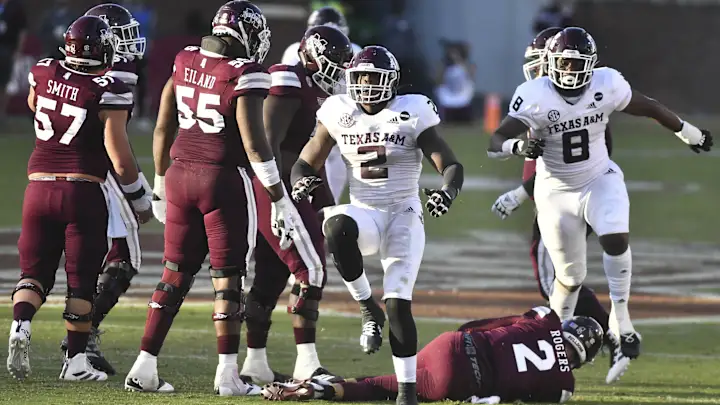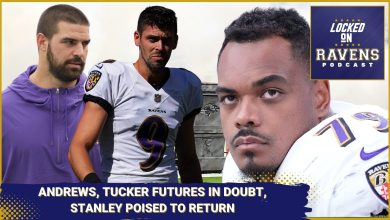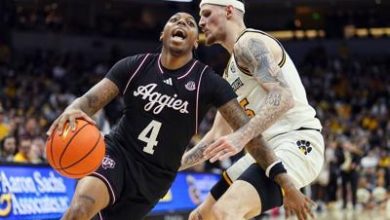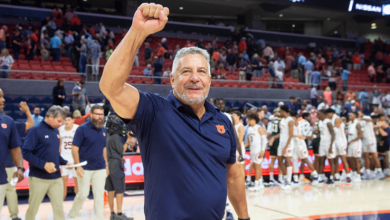Aggies ‘Abandoned’ Former Texas A&M Player in Civil Suit

In a highly publicized civil suit, a former Texas A&M player has alleged that he was “abandoned” by the university, the athletic department, and key members of the football program after suffering injuries that derailed his career. The case has raised questions about how universities, particularly their athletic departments, handle the well-being of student-athletes, especially when it comes to providing adequate support in times of injury and distress.
The player, whose identity is central to the legal proceedings, filed the lawsuit against Texas A&M University, the Texas A&M Athletic Department, and several individuals associated with the program, claiming that the school’s negligence in caring for his injuries ultimately led to the premature end of his football career and caused irreparable emotional and financial harm.
This lawsuit has sparked an important discussion about the responsibilities of universities to their athletes, the ethics of college sports, and the treatment of injured players who are often left to navigate life after football with little support. The case shines a light on the vulnerability of athletes who dedicate their lives to the game, only to find themselves abandoned once their physical contributions to the team are no longer viable.
In this article, we explore the details of the lawsuit, the circumstances leading up to it, the legal arguments being made, and the broader implications for the collegiate athletics landscape.
The Allegations: A Claim of Abandonment
The central claim in the lawsuit revolves around allegations of abandonment and inadequate care following a series of injuries that severely impacted the player’s career. The former player, referred to in court documents as John Doe, states that after suffering a significant injury during a practice session in 2024, he was not properly diagnosed, treated, or supported by the university. He contends that Texas A&M and the football program failed to provide him with the necessary medical treatment, rehabilitation, and emotional support, which led to his premature departure from the team and ultimately destroyed his professional aspirations.
John Doe’s legal team asserts that the Texas A&M athletic department was negligent in their duty to care for the athlete. The lawsuit specifically accuses the university and the athletic department of:
-
Failing to provide proper medical attention and care for the player after he sustained the injury.
-
Neglecting to offer the necessary rehabilitation and recovery resources that could have enabled him to return to the field.
-
Withholding information about his injuries and their long-term implications, which left him unaware of the severity of the situation.
-
Abandoning him emotionally and financially after his football career ended prematurely, with no further support provided after his playing days came to a close.
The suit goes further, claiming that once the player’s ability to contribute on the field was compromised, the university and coaching staff distanced themselves, leaving him without the financial support or access to the resources that many injured athletes rely on when transitioning out of the sport.
The Injury: A Defining Moment in the Player’s Career
The story of John Doe’s injury begins during a midseason practice in 2024, when the player, who had been a promising member of the team, was involved in a collision that led to what initially appeared to be a minor injury. However, as the days passed, the injury began to show signs of being more severe than originally anticipated.
Doe claims that the team’s medical staff initially downplayed the injury, opting to treat him with standard rehabilitation methods instead of conducting a comprehensive examination. It wasn’t until several weeks later, after the player had continued to experience pain and diminished mobility, that an MRI revealed significant damage to his shoulder, which would require extensive surgery and rehabilitation.
The lawsuit claims that, despite the severity of the injury, the Texas A&M athletic department failed to provide the player with the appropriate level of care. He was allegedly told by team doctors that he would be able to return to practice in a matter of weeks, which was later proven to be an incorrect assessment. By the time the truth about the extent of his injury was revealed, the damage had already been done. The delay in addressing his injury caused long-term effects on his health, making it impossible for him to continue playing football.
The Lack of Support: A Career Derailment
One of the most serious allegations in the suit is that Texas A&M “abandoned” the player after his injury. According to the lawsuit, once it became clear that Doe’s football career was over, the university ceased to provide him with the necessary support.
The former player claims that while he was recovering from surgery, he was left to navigate the complicated world of post-injury rehabilitation on his own. Despite the large amount of resources that Texas A&M dedicates to its athletes, Doe asserts that he was denied access to key services, including physical therapy, counseling, and career guidance that would have helped him transition out of football and into life after the sport.
The claim of abandonment is not limited to physical care. John Doe also argues that he was emotionally and mentally neglected by the athletic department, particularly after his playing career ended. As he dealt with the disappointment of being unable to play professionally, he claims that coaches and staff members avoided or dismissed him, leaving him without the proper guidance and mentorship that many athletes depend on during difficult transitions.
In addition, Doe alleges that his education, which had been put on hold while he focused on football, was not properly supported by the university. As a result, he claims that he faced significant difficulties in finishing his degree and finding employment once his football career was effectively over. The lawsuit states that the lack of support from Texas A&M caused long-term financial hardship, as the player struggled to find stability and direction in his life.
Legal Arguments: Negligence, Breach of Contract, and Emotional Distress
The lawsuit filed by John Doe includes several key legal claims:
-
Negligence: The player alleges that Texas A&M failed in its duty to provide proper medical care and treatment following his injury. This claim centers around the idea that the university’s medical staff did not properly diagnose or treat the injury, which led to long-term physical harm. Additionally, the failure to provide the proper rehabilitation resources is framed as a breach of the university’s duty to protect the health and well-being of its student-athletes.
-
Breach of Contract: In this aspect of the lawsuit, the player argues that Texas A&M breached an implied contract with him. According to the suit, by offering him a scholarship and a place on the football team, the university promised to provide him with the support necessary to pursue a football career. When that career was cut short due to injury, the suit claims that Texas A&M failed to honor its commitment by not providing the financial, medical, and emotional support the player needed during his recovery.
-
Emotional Distress: John Doe’s legal team also alleges that the university’s actions caused him significant emotional distress. The combination of physical injury, a disrupted football career, and the lack of support led to feelings of isolation, depression, and anxiety. The emotional toll of the situation is a central part of the case, with Doe’s attorneys seeking damages for the mental anguish caused by the alleged neglect and abandonment.
-
Financial Harm: Finally, the lawsuit claims that the lack of support caused severe financial difficulties for the player. With his football career effectively ended, the player struggled to find alternative sources of income and was forced to take on debt in order to cover his living and educational expenses. The financial strain was exacerbated by the university’s failure to assist him in securing a post-football career.
The University’s Response: Defending the Athletic Program
Texas A&M University has vigorously defended itself against the allegations, claiming that it provided all necessary care and support to the player in question. University officials have stated that they take the health and well-being of their student-athletes seriously and that they follow a thorough protocol for injury management and rehabilitation.
The university has also argued that the player did not follow the prescribed recovery plan and did not take full advantage of the resources made available to him. Texas A&M contends that the player’s assertion of abandonment is unfounded and that the athletic department went above and beyond to ensure he had access to medical care, counseling, and career advice.
The Bigger Picture: College Athletics and Athlete Welfare
This lawsuit brings to light the larger issue of how universities and athletic departments treat injured athletes. While universities like Texas A&M invest millions of dollars into their athletic programs and facilities, questions about the true level of support for athletes once their careers are over have come to the forefront.
The pressures placed on college athletes, especially in high-profile sports like football, are immense. Many student-athletes dedicate their entire lives to their sport, often sacrificing their physical and mental well-being in the pursuit of a professional career. However, once injuries end their playing days, these athletes often find themselves without the support systems they need to navigate the next phase of their lives.
John Doe’s case is a stark reminder of the challenges faced by college athletes, particularly those who suffer career-ending injuries. The outcome of this lawsuit could have far-reaching implications for how universities approach athlete welfare, both during and after their playing careers. As the case moves through the courts, it could spark important conversations about the responsibilities of college athletic programs and the need for comprehensive support systems to help athletes transition out of the sport.
A Critical Moment for College Sports
The civil suit filed by the former Texas A&M player highlights the complex relationship between universities, their athletic departments, and the student-athletes who put their bodies and minds on the line for the school’s success. The case challenges not only the actions of one university but also the larger system that governs college athletics.
While the legal proceedings unfold, the broader issue remains: Are universities doing enough to support their athletes, especially when injury forces them to leave the sport? The outcome of this case could set important precedents, shaping the future of college athletics and ensuring that student-athletes are not left to fend for themselves when their playing days come to an abrupt end.









